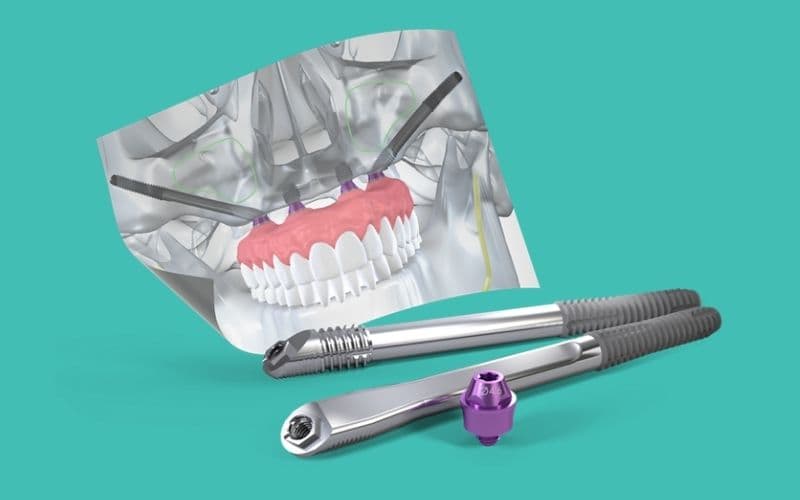To perform implant surgery, it is necessary for the patient to have a jawbone That in quantity and quality, allow the loading of a dental implant.
This is not always possible: some people suffer from severe bone deficits that cannot be solved even using the most modern bone regeneration techniques.
This happens, for example, in patients (usually) elderly people who have been without teeth for a long time: In fact, if the jawbone is not stimulated, it tends to resorb.
More causes of bone loss are usually theadvanced age, untreated periodontitis and theuse of removable dental prostheses (the dentures) which, if worn for many hours consecutively, fatigue the mucous membrane.
In all these cases, therefore, we usually resort to the use of zygomatic implants.
What is a zygomatic implant?
It is a Dental implant that is loaded (attached) to the cheekbone; precisely because it needs to be fixed on a bone placed higher than the maxillary bone, this type of implant can be up to 3 times longer than a traditional dental implant.

Is it safe to load an implant on the cheekbone?
When we talk about dental implants we always think of them being loaded onto the jawbone, and so it is normal that the idea of a implant fixed to the cheekbone can be weird.
However cheekbone is bone that has optimal characteristics for implant loading which can be excellently osseointegrated: this is because the cheekbone does not suffer the negative repercussions related to all those factors that, instead, worsen the quality of jaw bones (age, lack of teeth, oral diseases, etc.).
In addition, interventions to load this type of plant have very high probability of success.
How is the surgery to load a zygomatic implant performed?
It is in every way similar to a traditional implantology procedure: This means that the patient is given local anesthesia.
The difference with traditional implantology is. Zygomatic implants require a more invasive procedure as you have to reach the cheekbone to load the implant.
Nevertheless, usually this type of implantology. is immediate loading, so immediately after the operation a fixed (but still temporary) prosthesis will be loaded, allowing the patient to Immediately recover aesthetics and functionality of the mouth.
The final prosthesis will be loaded once the time required for proper osseointegration of the zygomatic implant has passed.
